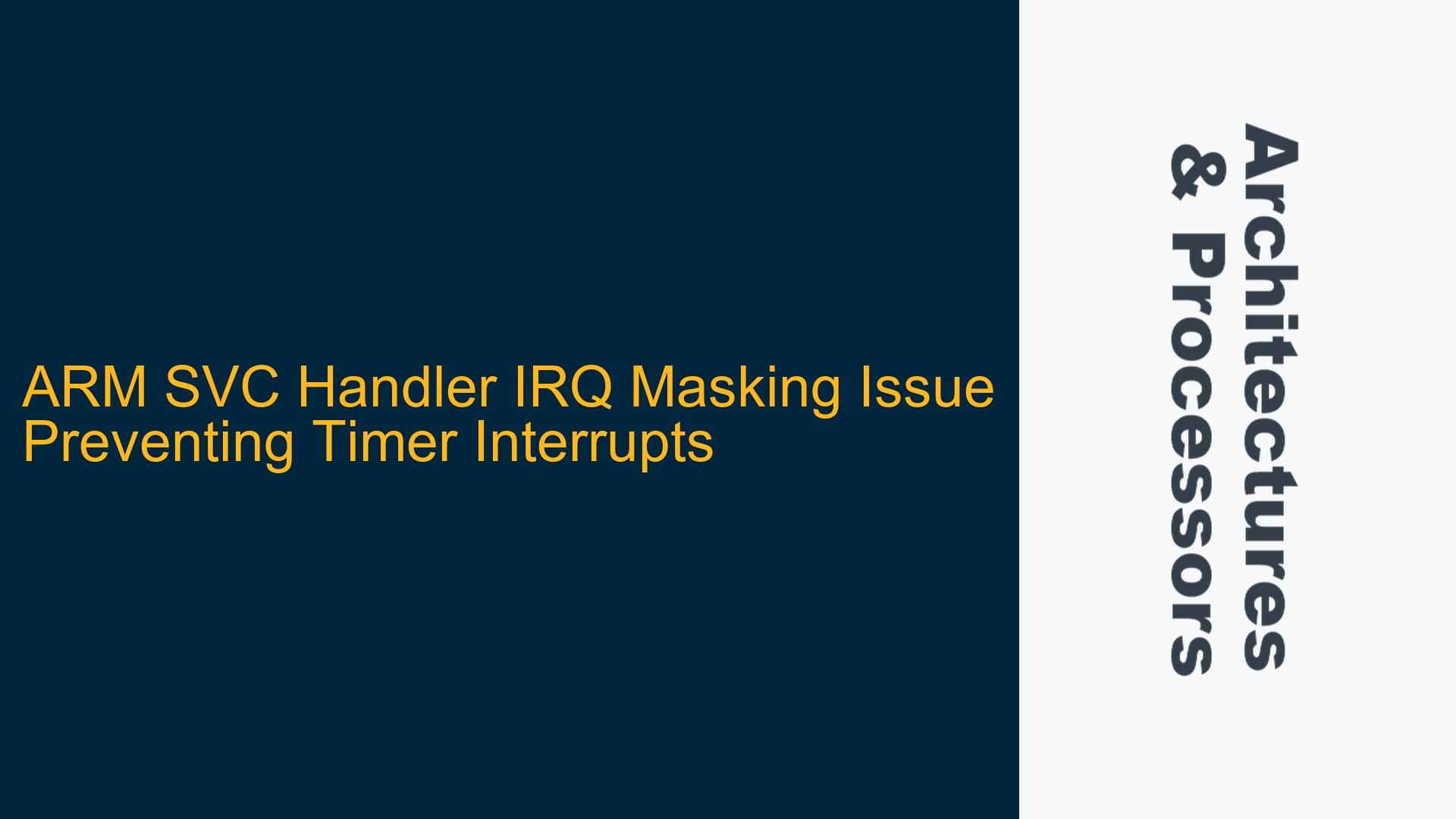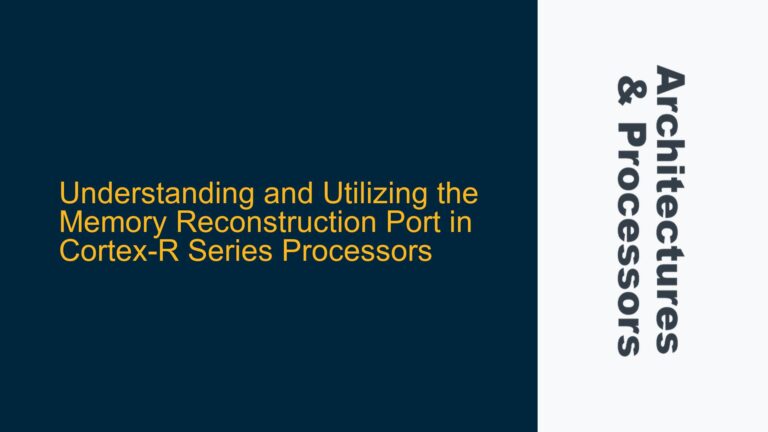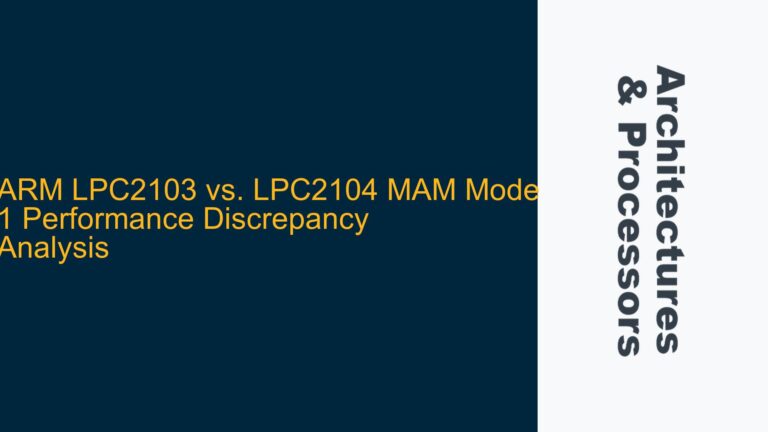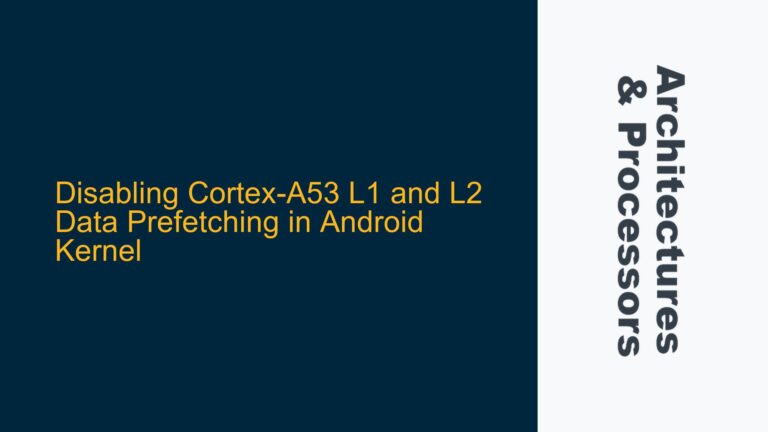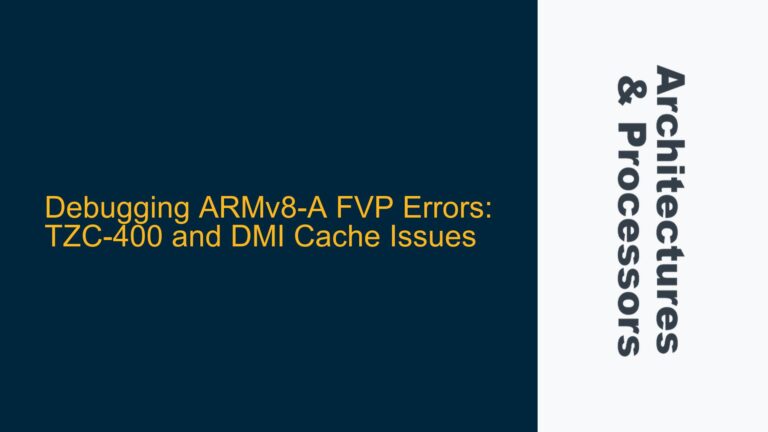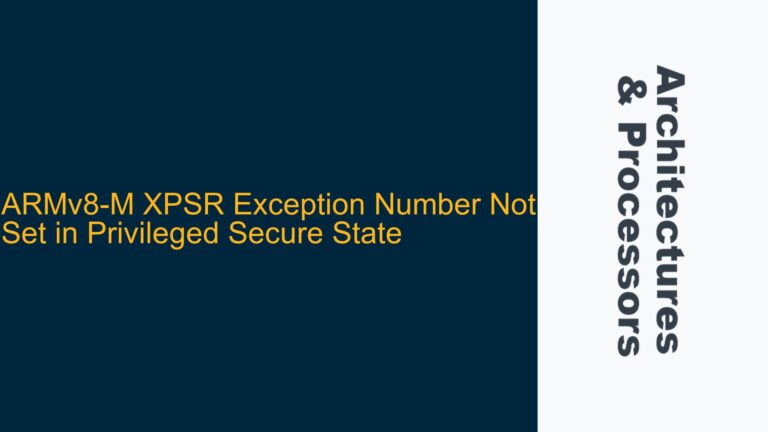ARM Cortex-A SVC Handler IRQ Masking Behavior
When working with ARM Cortex-A series processors, particularly in systems where Supervisor Calls (SVC) are used to transition from EL0 (user mode) to EL1 (kernel mode), understanding the interaction between exception handling and interrupt masking is critical. A common issue arises when an SVC handler fails to properly manage the PSTATE.I bit, which controls whether IRQs are masked or unmasked. This bit is automatically set by the processor when an exception is taken, including SVC exceptions, to ensure that the exception handler can execute without being interrupted. However, if the SVC handler does not explicitly clear this bit, IRQs remain masked for the duration of the handler’s execution. This can lead to missed timer interrupts, which are crucial for preemptive scheduling in a multitasking system.
The PSTATE.I bit is part of the Processor State (PSTATE) register, which governs the current execution state of the processor. When an exception is taken, the processor saves the current PSTATE value to the Saved Program Status Register (SPSR) and sets the PSTATE.I bit to mask IRQs. This behavior is consistent across all ARM Cortex-A processors and is documented in the ARM Architecture Reference Manual. The SVC handler must explicitly clear the PSTATE.I bit if it intends to allow IRQs during its execution. Failure to do so will result in IRQs being masked, which can cause system-level issues such as missed timer interrupts and unresponsive scheduling.
In the context of a kernel implementation, the SVC handler is often responsible for performing system calls initiated by user-space applications. If the SVC handler does not unmask IRQs, any timer interrupts that occur during the handler’s execution will be deferred until the handler completes and returns to EL0. This can lead to significant delays in scheduling and other time-sensitive operations, effectively causing the system to appear "stuck" during long-running SVC calls.
PSTATE.I Masking and SVC Handler Configuration
The root cause of the issue lies in the interaction between the PSTATE.I bit and the SVC handler’s configuration. When an SVC exception is taken, the processor automatically sets the PSTATE.I bit to mask IRQs. This is a protective measure to ensure that the exception handler can execute without being interrupted by lower-priority IRQs. However, if the SVC handler does not explicitly clear the PSTATE.I bit, IRQs remain masked for the duration of the handler’s execution. This behavior is consistent across all ARM Cortex-A processors and is documented in the ARM Architecture Reference Manual.
The SVC handler must explicitly clear the PSTATE.I bit if it intends to allow IRQs during its execution. This can be done using the msr instruction to modify the PSTATE register. For example, the following assembly code snippet demonstrates how to clear the PSTATE.I bit in an SVC handler:
msr daifclr, #2 // Clear PSTATE.I to unmask IRQs
This instruction clears the PSTATE.I bit, allowing IRQs to be taken during the execution of the SVC handler. It is important to note that this operation should be performed after the handler has saved the necessary context and is ready to handle IRQs. Prematurely unmasking IRQs can lead to race conditions and other unpredictable behavior.
In addition to the PSTATE.I bit, other configuration registers and system settings can influence the behavior of IRQs during SVC handler execution. For example, the Current Program Status Register (CPSR) and the Exception Return (ERET) instruction play crucial roles in managing the processor state during exception handling. The CPSR contains the current state of the processor, including the PSTATE.I bit, while the ERET instruction is used to return from an exception and restore the saved state from the SPSR.
The interaction between these registers and the SVC handler’s configuration can be complex, and careful attention must be paid to ensure that IRQs are properly managed. For example, if the SVC handler modifies the CPSR or SPSR without properly managing the PSTATE.I bit, it can inadvertently mask or unmask IRQs in ways that are not intended. This can lead to subtle bugs that are difficult to diagnose and fix.
Implementing IRQ Unmasking and Context Management in SVC Handlers
To resolve the issue of missed timer interrupts during SVC handler execution, the SVC handler must be modified to explicitly clear the PSTATE.I bit and properly manage the processor context. This involves several steps, including saving and restoring the processor state, unmasking IRQs at the appropriate time, and ensuring that the handler can safely handle IRQs without causing race conditions or other issues.
The first step is to save the necessary context when the SVC handler is entered. This typically involves saving the general-purpose registers, the link register (LR), and the SPSR to the stack. This ensures that the handler can restore the processor state when it completes and returns to the calling code. The following assembly code snippet demonstrates how to save the context in an SVC handler:
stp x0, x1, [sp, #-16]! // Save x0 and x1 to the stack
stp x2, x3, [sp, #-16]! // Save x2 and x3 to the stack
stp lr, xzr, [sp, #-16]! // Save LR and a dummy register to the stack
mrs x0, spsr_el1 // Save SPSR_EL1 to x0
str x0, [sp, #-8]! // Save SPSR_EL1 to the stack
Once the context has been saved, the SVC handler can safely unmask IRQs by clearing the PSTATE.I bit. This is done using the msr instruction, as shown in the previous section. It is important to note that this operation should be performed after the context has been saved, to ensure that the handler can safely handle IRQs without corrupting the saved state.
After unmasking IRQs, the SVC handler can proceed with its normal execution. This may involve performing system calls, accessing kernel data structures, or other operations that are required by the specific implementation. During this time, IRQs can be taken, and the handler must be prepared to handle them safely. This typically involves ensuring that any shared data structures are properly protected by locks or other synchronization mechanisms.
When the SVC handler completes its execution, it must restore the saved context and return to the calling code. This involves restoring the general-purpose registers, the link register, and the SPSR from the stack. The following assembly code snippet demonstrates how to restore the context in an SVC handler:
ldr x0, [sp], #8 // Restore SPSR_EL1 from the stack
msr spsr_el1, x0 // Restore SPSR_EL1
ldp lr, xzr, [sp], #16 // Restore LR and dummy register from the stack
ldp x2, x3, [sp], #16 // Restore x2 and x3 from the stack
ldp x0, x1, [sp], #16 // Restore x0 and x1 from the stack
Finally, the SVC handler must return to the calling code using the ERET instruction. This instruction restores the processor state from the SPSR and branches to the address stored in the ELR_EL1 (Exception Link Register). The following assembly code snippet demonstrates how to return from an SVC handler:
eret // Return from exception
By following these steps, the SVC handler can safely unmask IRQs during its execution, ensuring that timer interrupts and other critical events are not missed. This approach requires careful attention to detail and a thorough understanding of the ARM architecture, but it is essential for building reliable and responsive systems.
